Sometimes I feel the need for a nice brisk swing-my-legs walk, instead of the meandering, inch-along, up-and-down way I usually move through the woods, and Spier Falls Road offers just the place to do that. Right at the northern boundary of Saratoga County, this gently curving road closely follows the Hudson River as the road rolls past the eponymous Spier Falls Dam, the steep forested slopes and jagged cliffs of the Palmertown Mountain Range rising abruptly from the roadside.
Spring-watered boulders line the road, their jagged rocks offering a foothold for a marvelous variety of evergreen plants, as well as tiered shelves from which dangle spectacular icicles when the weather turns cold.
As clouds today moved intermittently across a low December sun, the sunlight cast a golden glow across the glittering ice.
With daytime temperatures still above freezing most days, the tiny rills that course down the mountains splash and dance from rock to rock. Fantastic fairy castles of ice will build up around these rills as the winter proceeds.
I love how the sharp edges and rough surfaces of the roadside rocks are softened by cushions of beautiful mosses of many different kinds, all of them green all winter.
Even though I don't know the names of most of these mosses, I marvel at the lovely shapes and colors that decorate the constantly watered rock. This one had long ropy stems with short sharply pointed leaves. It occurred to me that it might be Fountain Moss (Philonotus fontana), especially since it occupied the wettest areas of the boulders. Without that species' distinctive orb-shaped spore capsules, I couldn't be sure.
This moss had spiky leaves, and it spilled in thick clumps over the jagged edges of the wet rocks.
Finally, a moss I believe I know the name of, recognizing the spidery, starburst leaves of Apple Moss (Bartramia pomiformis), even though this particular clump was lacking its distinctive tiny apple-shaped spore capsules.
And this spiky erect moss that resembles a miniature pine forest is probably one of the Haircaps (Polytrichum sp.). I loved how its lush green carpet was backed by a sheer wall of lichen-spotted rock.
A nice mix of several different mosses cushioned a ledge that held a long row of the basal leaves of Early Saxifrage (Micranthes virginiensis). This spring wildflower's leaves will stay this fresh-looking all winter, and when May arrives, these rocky ledges will explode with masses of snowy-white blooms, a veritable rock garden of small star-shaped flowers.
I love how the basal leaves of Early Saxifrage look as if they'd been cut out with pinking shears.
When I drew abreast of the Spier Falls Dam, I pushed my way through roadside thickets to enter an open area of jumbled sharp-edge rocks and sheer cliffs that were draped with icicles. This is a remnant of one of the places the mountainside was quarried for rock to build the dam, back at the close of the 19th Century. At its completion in 1903, the Spier Falls Dam was one of the largest hydroelectric dams in America, 1800 feet long and more than 100 feet high, requiring an enormous amount of rock to build.
I have read that a number of workers died while working to construct this dam, and as I walked around this abandoned quarry I thought of those men, most of them immigrants from Europe, and of how so little effort was made at the time to ensure their safety. May they rest in peace. We owe them our gratitude still, for the 56 megawatts of power this dam continues to generate for the electrical needs of the New York Capital Region
As I carefully picked my way among the jagged rocks still lying about the floor of the quarry, I could hear the thunder of water plunging over the dam, the only sound to disturb the quiet of this haunted place today.
A number of human-made artifacts remain at this site, including several concrete and iron structures that I suspect served as footings for the huge derricks from which cables were strung to carry the quarried rock out to the construction site on the river. This photo shows just a glimpse of the still-operating dam where it stretches across the Hudson.
I have never figured out for what purpose this small stone structure was erected. When I first discovered it several years ago, I thought it might be an oven or part of a forge. But I have never found where a fire might have been built within it. Except for the square opening (visible in this photo) that extends all the way to where the structure meets the quarry wall, the structure is solid rock. So it remains a mystery, one that adds yet another touch of consequence to this historic site. (And I did once find some old bones and a deer skull way back in that opening, possibly dragged in there by a Fisher or other smallish animal.)
UPDATE: I have since learned that this structure is most likely a bread oven, typical of community ovens found in many Italian neighborhoods, whether in Europe or in immigrant communities here. The fire is actually set within the hollow chamber and kept burning until the surrounding rocks are hot enough to maintain a bread-baking temperature long enough to bake several loaves of bread. The ashes and embers are then raked out, the bread loaves placed inside the chamber, and a fireproof door is installed across the opening. Since many of the stoneworkers who constructed this dam were Italian immigrants, this seems the most likely reason for a structure like this. Such a fascinating remnant!
I lingered so long at this quarry site, it began to grow dark, and since I had about a mile to walk to reach my car, I hurried away. Before long, it stated to snow, filling the darkening air with big soft clusters of flakes. This seemed to be just the right touch of beauty to end my walk today.









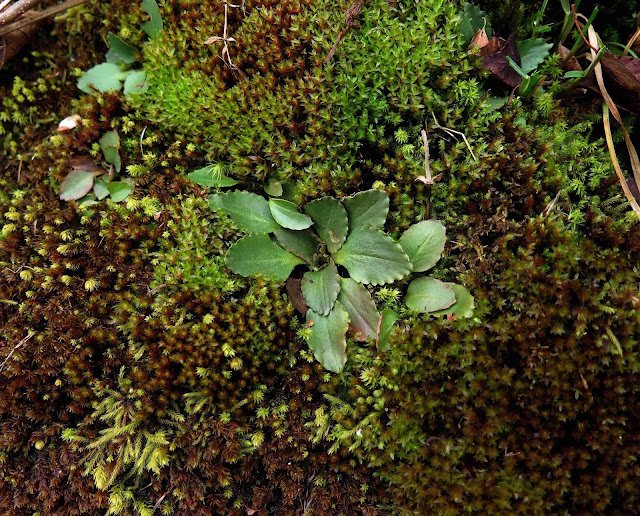

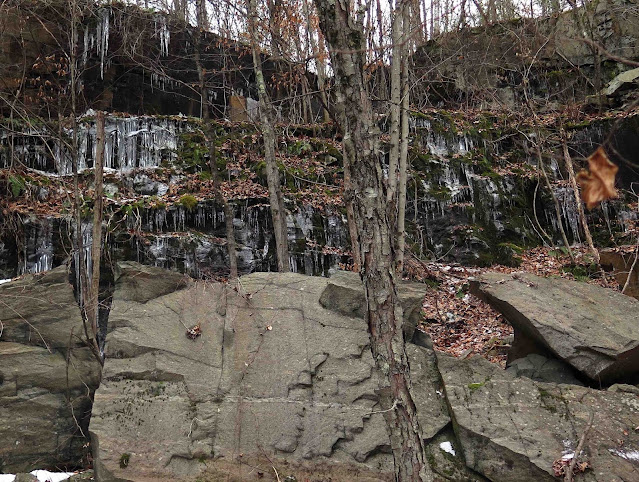

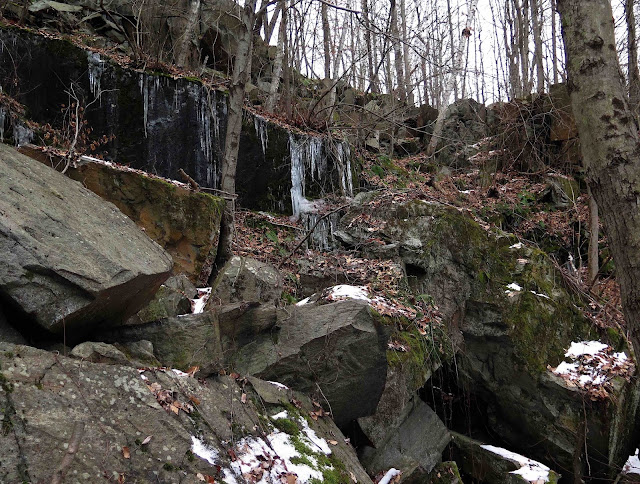
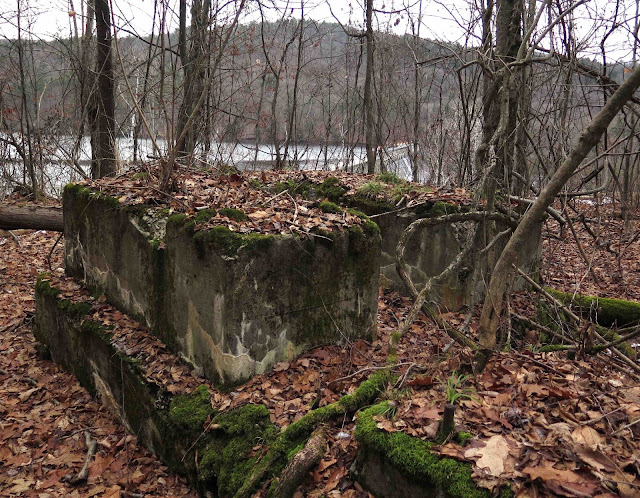
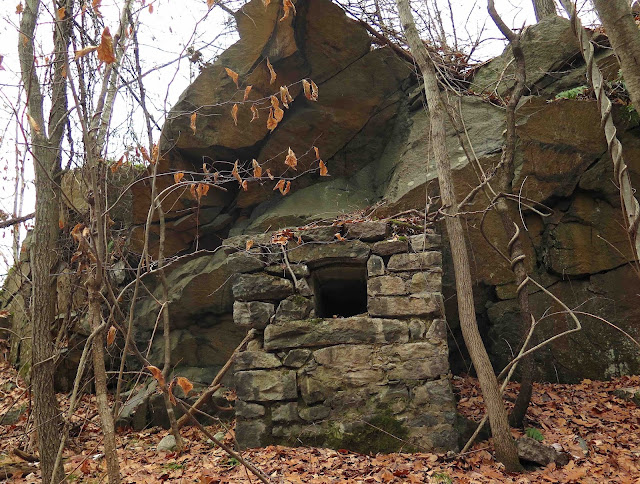

4 comments:
I love your snowflake photos!
Very nice photos of the mosses -- I certainly can't identify many mosses, it's a real specialty. If only those rocks could talk; there are many old quarries in this area, each with an aura of mystery.
I loved taking this short tour with you Jackie. I'd love to see it in the flesh someday.
I loved taking this short tour with you Jackie. I look forward to seeing some of these sights in the flesh one of these days.
Post a Comment